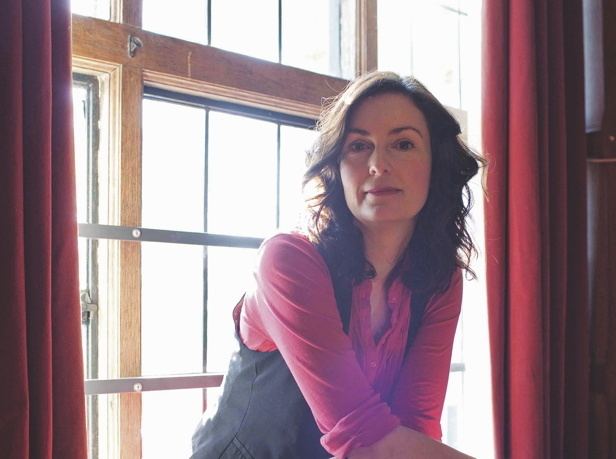Full Name Lucie M. Green Name Lucie Green | Residence Guildford, Surrey | |
 | ||
Alma mater University of SussexUniversity College London Books 15 Million Degrees: A Journey to the Centre of the Sun Board member of European Physical Society, Science Museum, London | ||
December 11h lucie green cosmic genome science advent calendar
Lucie Green (born c.1975) is a British science communicator and solar researcher. Since 2005 Green has been a Royal Society University Research Fellow (previously the Royal Society Dorothy Hodgkin Fellow) at Mullard Space Science Laboratory (MSSL) of the University College London (UCL). Green runs MSSL's public engagement programme and sits on the board of the European Solar Physics Division (ESPD) of the European Physical Society and the advisory board of the Science Museum.
Contents
- December 11h lucie green cosmic genome science advent calendar
- Laboratory news dr lucie green solar scientist metropolis multimedia
- Early life and education
- Career
- Solar Orbiter
- Media appearances
- Personal life
- Awards and honours
- Works
- Research publications
- Books
- References

An award-winning science writer, television and radio presenter and science communicator, Green has a passion for engaging the public with space science and astronomy. Perhaps best known for her work on The Sky at Night, in 2013 Green became the show's first ever female presenter following the death of Sir Patrick Moore.

Green's research focuses primarily on the atmospheric activities of the Sun, particularly coronal mass ejections and the changes in the Sun's magnetic field which triggers them.

Laboratory news dr lucie green solar scientist metropolis multimedia
Early life and education
After an early interest in the care of animals, Green studied at Dame Alice Harpur School in Bedfordshire gaining 9 GCSEs and 4 A-levels and 1 AS, including art and physics.
She has frequently returned to her old school to discuss her research. Fiona Clements, Green's physics teacher at the school, has said, “She is a great advocate for young women in science and we are proud that she continues to remember the school by returning to talk about her research to pupils."
"I always liked physics from an early age while I was at school. That was my passion: problem solving or asking questions and then finding out ways of answering those questions. But I never had a burning ambition of being a space scientist, and I wasn’t even into amateur astronomy [at that time]".
After completing her A-levels, Green took a year out during which time she studied art. Then after deciding to pursue physics, Green completed her undergraduate Master of Physics degree in Physics with Astrophysics at the University of Sussex, graduating with a 2:1. Whilst there, encouraged by visits to the Crimean Astrophysical Observatory, Green decided to do a PhD in solar physics at MSSL which she completed in 2002.
"I read Physics with Astrophysics at the University of Sussex and whilst there made a couple of trips to observe the Sun at the Crimean Astrophysical Observatory, close to the Black Sea. It was this solar observing that sparked my interest in solar physics. I discovered that the Sun isn’t a bland and quiet object but rather it has an active and extended atmosphere which affects us."
"I think I saw the light whilst I was sunbathing on the beach, if you'll pardon the pun! Then I joined the Mullard Space Science Laboratory, in Surrey, and started studying coronal mass ejections."
Career
After gaining her PhD in solar physics, Green moved to Cardiff University's School of Physics and Astronomy. Green became the Project Co-ordinator of the Faulkes Telescope Project, a project which enables schools to have remote use of two 2-metre class telescopes located in Hawaii (Faulkes Telescope North in Hawaii) and Australia (Faulkes Telescope South in Australia).
Since 2005 Green has been a Leverhulme Research Fellow (previously the Royal Society Dorothy Hodgkin Fellow), at MSSL. Her current work focuses on the pattern of magnetic fields in the Sun's atmosphere, which sporadically erupt to form a coronal mass ejection; how these relate to geomagnetic activity and what this means for those living on the Earth.
"In particular, I am interested in coronal mass ejections, huge eruptions of magnetic field and hot gases that somehow break free from the Sun and speed into the Solar System at 100's km/s... I study the magnetic source regions of coronal mass ejections with a view to understanding the changes in the Sun's magnetic field which trigger them."
She is a member of UCL’s Steering Committee for the Beacon for Public Engagement and she runs MSSL’s public engagement programme.
From 2006-2012 Green was a member of the Royal Society's Education Committee and was part of their State of the Nation reports Working Group during 2007-2009.
Green sits on the board of the European Solar Physics Division (ESPD), the European Physical Society and the advisory board of the Science Museum.
Green regularly works with the major space agencies, including the European Space Agency (ESA), the National Aeronautics and Space Administration (NASA) and the Japanese Space Agency (JAXA), where she was the Chief Observer on the Hinode mission. She is also helping to design future missions, such as the European Space Agency’s Solar Orbiter programme.
Green makes regular appearances on TV and radio and frequently gives talks about the UK's current research in solar system science. In April 2015 she spoke at QED 2015.
"During my PhD I started to become interested in discussing space science with people outside of my immediate research area. This has led me to organise local science festivals, hold open days, work with school students and adult learners and work in TV and radio."
Solar Orbiter
Green is also involved in the development of the 'Solar Orbiter', a Sun-observing Satellite under development by the ESA. The aim of the mission is to perform close-up, high-resolution studies of the Sun for a better understanding of the sun's behaviour, heliosphere, solar winds and coronal magnetic field.
"So the Sun has this outflow of magnetic fields and charged particles and we can look at the Sun remotely and see what’s happening, and [detect] the material when it gets to Earth, however there is a 150-million-kilometre gap in between where we can’t do anything. So the Solar Orbiter will get very close to the Sun – inside the orbit of Mercury – and measure the material coming off it, before it has altered. This will provide us with the missing link: we’ll see what’s happening at the Sun, record what’s happening on Earth and also measure what’s happening in between."
A project Green has been involved with for over nine years, the Solar Orbiter is set to be launched in 2018.
Media appearances
As a television presenter, science expert and science communicator Green regularly appears on television and radio. Green's list of TV and media appearances is extensive, but most notably she has appeared on many television programmes, including The Sky at Night and Stargazing Live, Stardate, Horizon, Xchange and The One Show.
Green is also a regular on several radio programmes and podcasts including: The Infinite Monkey Cage, Saturday Live and PM (BBC Radio 4), Material World, Slooh Radio (USA), 4 News hour (BBC World Service), 5Live Drive and Bacon’s Theory (BBC 5 Live), The Butcher’s Apron and Nick Ferrari (LBC).
Between 2004-2005 Green co-presented several programmes in the BBC/Open University series, Stardate. Some notable episodes include: Stardate: Mission To Titan which she co-presented with Adam Hart-Davis, covering the European Space Agency successfully landing the Huygens probe on Saturn's largest moon, Titan. And Stardate: Deep Impact which she co-presented with Brian Cox, covering NASA successfully colliding a probe into the side of comet Tempel 1 in an effort to learn more about the origins of the Solar System.
Since 2010 Green has also appeared on and co-presented several episodes of Stargazing Live.
In 2013 Green became the first ever female presenter of The Sky at Night after the death of Sir Patrick Moore. From February to December 2013 Green co-presented the show with Chris Lintott.
Green has also appeared on several episodes of the BBC Radio 4 show The Infinite Monkey Cage, discussing topics ranging from the end of the world to parallel universes and appearing alongside such personalities as Andy Hamilton and Stephen Fry.
In 2013 Green hosted her own radio programme 'Solar Max' on BBC Radio 4 on the topic of space weather. Specifically addressing how emissions from the sun can cause changes in the Earth's magnetic field and upper atmosphere, and the implications this has for the UK.
Personal life
I'm a great believer in enjoying life.
When asked where her love of space science came from, Green has said: "As a child, I remember hearing my parents say that they thought I was going to be an astrophysicist when I grew up. Not actually knowing what an astro-thinga-me-wotsit was, I agreed with them because I thought it sounded impressive. Really at that time I wanted to look after animals. People used to bring me injured birds and I would stay up all night feeding them worms!"
In her spare time Green is a lover of games of all kinds: "I carry a frisbee whenever I'm near a large space and the 'Never Mind the Buzzcocks' board game whenever I'm going to be with more than 3 people. I love games of any kind, especially the ones I can win."
She is also a big fan of dancing, especially Modern Jive, as well as playing tennis and going out with family and friends.
Green married stand-up comedian and maths communicator Matt Parker in 2014.
Awards and honours
In 2005, Green was a member of a team that won a Royal Television Society's Life Long Learning and Multimedia Award for a television show covering the transit of Venus, that enabled viewers to make their own Sun-Earth distance measurements using observations of the transit that year.
In 2009 she was awarded the prestigious Royal Society's Kohn Award for Excellence in Engaging the Public with Science, for her work engaging a diverse audience with science, and more specifically, for creating a culture of public engagement within her department.
Dr Peter Cotgreave, Director of Public Affairs at the Royal Society said: "We are delighted to be awarding Dr Lucie Green the Royal Society Kohn Award. She is a shining example of how one person's determination can change an entire institution's approach to public engagement. More than ever before, the general public needs to know the importance of science and the solutions it may hold to some of our generation's biggest challenges. Dr Green is a fantastic ambassador for science and her efforts to encourage other scientists to engage with the public make her a very worthy recipient of this award."
Green has said: "As a scientist I feel that public engagement is a vital part of my day-to-day life and fundamental to the role of a university. As well as being an important part of our culture, public engagement with science provides many benefits to the scientist, their host institution and the audience through discussing research in an inclusive way."
In 2010 she was named one the UK top 10 best science educators under 40 in The Times October science supplement, Eureka.
In 2015 Green had a bust unveiled at the Royal Society in London, whilst being honoured at an event exploring the history of women and science writing. The bust was created and gifted to the Royal Society by Marcus Cornish.
Works
List of works by Green:
Research publications
A list of Lucie Green's refereed and non-refereed scientific publications:
2014
2013
2012
2011
2010
2009
2008
2007
2005
2004
2003
2002
2001
Before 2001
